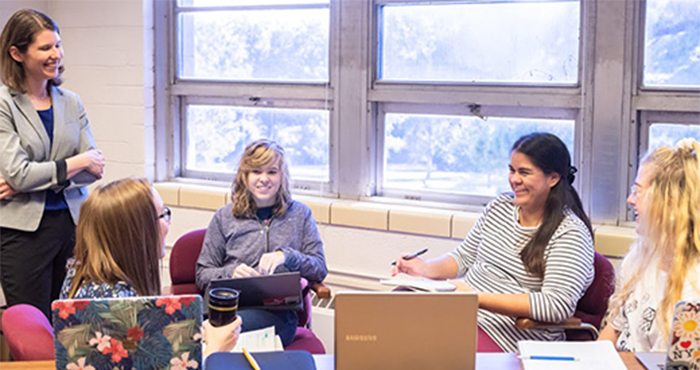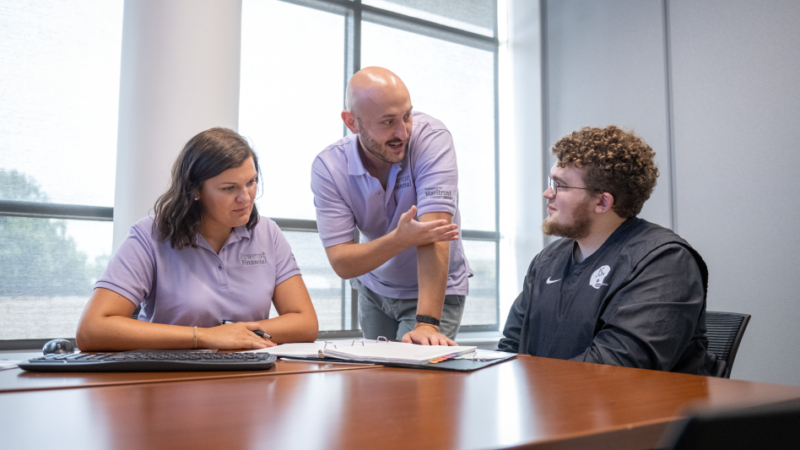Laura Kanost designs course and textbook to equip tomorrow’s language professionals
For Dr. Laura Kanost, professor in the Department of Modern Languages, designing her own course with entirely unique content meant there was no textbook that would singularly meet the needs of her students. Rather than splicing together information from different resources, she was able to create her own textbook with funding from the Open/Alternative Textbook Initiative, also known as Textbooks 2.0.
With the ability to implement tailored activities and multimedia elements into the textbook, Textbooks 2.0 provides an advantage, especially for language courses. In Spanish-English Community Translation and Interpreting (SPAN 774), Kanost designed a curriculum and textbook which combines listening and memory exercises, role plays and community-based service-learning experience.
One noteworthy component of the SPAN 774 textbook is the addition of court interpreting exercises. Kanost partnered with co-author Dr. Julie A. Sellers, a K-State M.A. graduate and expert in court interpreting, who was able to provide recorded court interpreting exercises that students can find within their textbooks and on YouTube.
“I was really excited about offering this class because it addresses an urgent need in Kansas and beyond: It prepares senior Spanish translation minors, Spanish majors, and M.A. students to act ethically as translators of written language and interpreters of spoken language in basic situations in their communities,” said Kanost.
In addition to grant funding through the Textbooks 2.0 Initiative, Kanost also received support from K-State Libraries staff who helped her through technical questions and copyright best practices.
After the success of her first open/alternative textbook, Kanost decided to create one for her Hispanic Readings and Media course (SPAN 550). While the original course textbook required Kanost to supplement multimedia materials, the open/alternative textbook provides students with a set of activities that are specifically tailored to the course. The digital format of the textbook allows students to download the book as a PDF or print it and add hand-written notes.
Each textbook typically saves students $100, which was especially important with the unknowns brought by COVID-19. Because students were constantly faced with relocation, financial hurdles and other challenges, the Textbooks 2.0 Initiative has been ahead of its time in providing a free, online resource that can directly support academic needs from any location and on multiple devices such as phones, laptops and tablets.
“Anything we can do to relieve financial pressure is particularly helpful right now. Since March, many of my students have had to change their living situation with little warning, but everyone always had access to the PDF,” said Kanost.
Just as the textbook offers online accessibility for K-State students, it also supports students from around the world. Kanost had the opportunity to publish both textbooks with New Prairie Press, published at K-State. In just one year, more than a thousand readers downloaded the free SPAN 550 textbook.
“Grant funds for this book are helping K-State students become better thinkers and communicators by engaging with diverse works exploring issues that connect us all as human beings,” said Kanost. “Thanks to the donors who make this program possible, four cohorts of translation and interpreting students have been equipped to make a difference for language access, with a group completing the class each year.”






